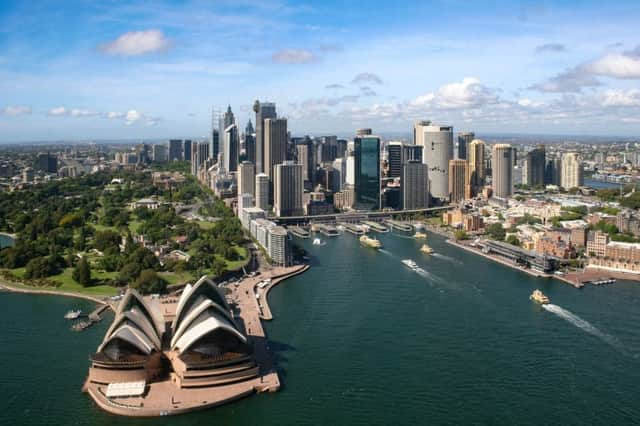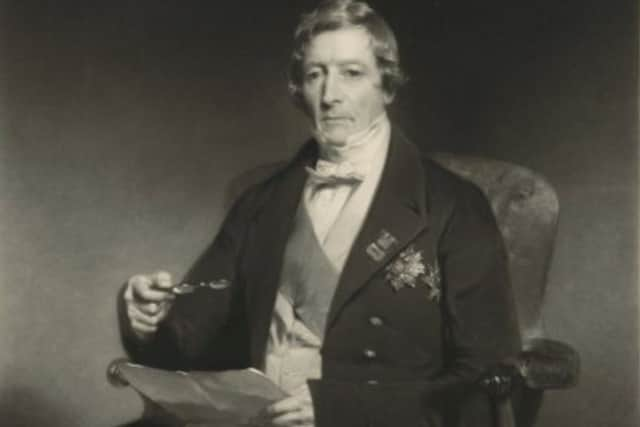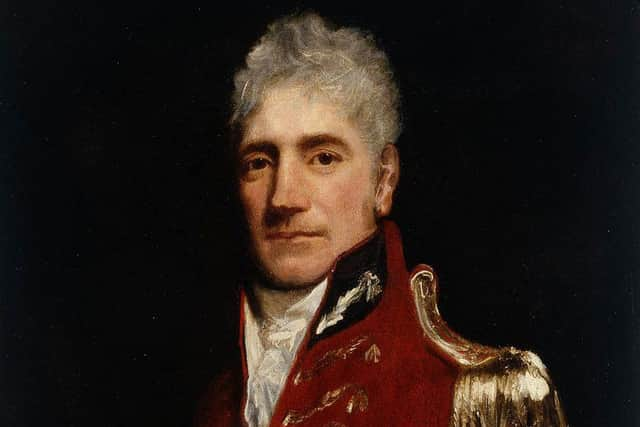How the Scots built Sydney


Many of the architects, politicians and state officials who established Sydney were born in Scotland, and their influence can still be seen today.
Among the first Scots to help build Sydney as a city was John Hunter. He was an officer of the Royal Navy, who was born in 1737 in Greenock. He became the second Governor of New South Wales in 1794, and found that the military was largely in control of the province’s penal colony. He attempted to restore control of the courts and the land to civil administration, but this was immensely difficult. He also explored the country around Sydney, opening it up for travel and settlement.
Advertisement
Hide AdAdvertisement
Hide AdAnother governor of New South Wales, Lachlan Macquarie, has had an immeasurable impact on the whole of Australian society, as well as Sydney. He was born in 1762 on Ulva, an island of the Inner Hebrides. In 1810, he became the fifth and last autocratic governor of New South Wales, and was instrumental in Sydney’s transformation from a penal colony to a free settlement. The inscription on his tomb reflects his massive influence on Australian society: it reads, “Father of Australia”.


The rum rebellion of 1808 against Governor William Bligh had disrupted local government in New South Wales, so Macquarie had to rectify this. He managed to take power back from the military, as well as establishing the first official Australian currency.
The street layout of Sydney is largely based on Macquarie’s own street plan, and all the most important buildings in the city are situated on Macquarie Street, named after the man himself. The hospital he founded, Sydney Hosital, is among the buildings on this street. There are a great many places named after him in Sydney, such as Macquarie Place, Lighthouse, Fields, Park, Links, Hospital and University.
Thomas Brisbane, born in Largs in 1773, was a Scottish Governor of New South Wales who had his own unique legacy. When he was governor, between 1821 and 1825, the colony was expanding fast, so he had to reform the currency and agriculture in order to keep things running.
Having studied astronomy and mathematics at the University of Edinburgh, Brisbane was invited to become the first president of the Philosophical Society of Australasia. This later became the Royal Society of New South Wales, which is the oldest learned institution in the southern hemisphere. As you can probably guess, the capital of Queensland was named after Brisbane, which was a convict settlement in his time and later became one of Australia’s largest cities.


The Colonial Secretary for New South Wales in 1825, during the governorship of Brisbane, was another Scot, called Alexander Macleay. He was born in Ross-shire in 1767, and had assembled the finest collection of insects and butterflies in England, or perhaps the world. His collections form the basis of the University of Sydney’s Macleay Museum collection. He also built Elizabeth Bay House, which still stands today. Completed in 1839, the Regency-style building was described as “the finest house in the colony”.
Another builder of magnificent Sydney buildings, James Barnet, was born in Arbroath in 1827. He became the Colonial Architect for New South Wales in 1862, and, over a 28-year period, he built 169 post and telegraph offices, 130 courthouses, 155 police stations, 110 lock-ups and 20 lighthouses. Some of his most celebrated buildings include the Sydney General Post Office, the Australian Museum and the Colonial Secretary’s building. His style was influenced by the Italian Renaissance, but he disliked excessive ornamentation.
Advertisement
Hide AdAdvertisement
Hide AdThe trend of Scottish architects in Sydney continued with George McRae, who became the City Architect in 1889. He was born in Edinburgh in 1858, the son of a joiner. In Sydney, he was given a number of promotions over the years, eventually rising to the position of New South Wales Government Architect in 1923. The buildings of his which have survived are now heritage-listed, including parts of Taronga Zoo, the Queen Victoria building, and the Corn Exchange on Sussex Street. He favoured an American Romanesque style, and introduced some unusual features to his buildings, such as a curved façade on the Corn Exchange.
Andrew Fisher, an Ayrshire man who was born in 1862, was one of Australia’s Prime Ministers, serving three separate terms between 1908 and 1915. His 1910 government made world history as the first Labour majority at a national level. His impact on Sydney is still being felt, as his government established the nationalised Commonwealth Bank of Australia. With its headquarters in Sydney, the bank is now a multinational business, with branches in New Zealand, the USA, the UK, Asia and Fiji.


Scottish Presbyterianism has also become part of Sydney’s multi-faceted culture. This was largely down to John Dunmore Lang, a minister from Greenock, who built the first Presbyterian church in New South Wales, completing it in 1826. His publication, The Colonist, called for an end to transportation, and brought a large number of ministers and teachers to New South Wales. He promoted the development of the Australian colonies, and tried to encourage immigration.
Education in Sydney is still influenced by Presbyterianism today. Scots College, founded in 1893, is an independent Presbyterian boarding and day school in Sydney. It was founded by Reverend Dr Archibald Gilchrist, the Reverend William Dill-Macky and the Reverend Arthur Aspinall, who wanted to give children from isolated farming families the opportunity of a good education. Nowadays, the school has around 1800 students.